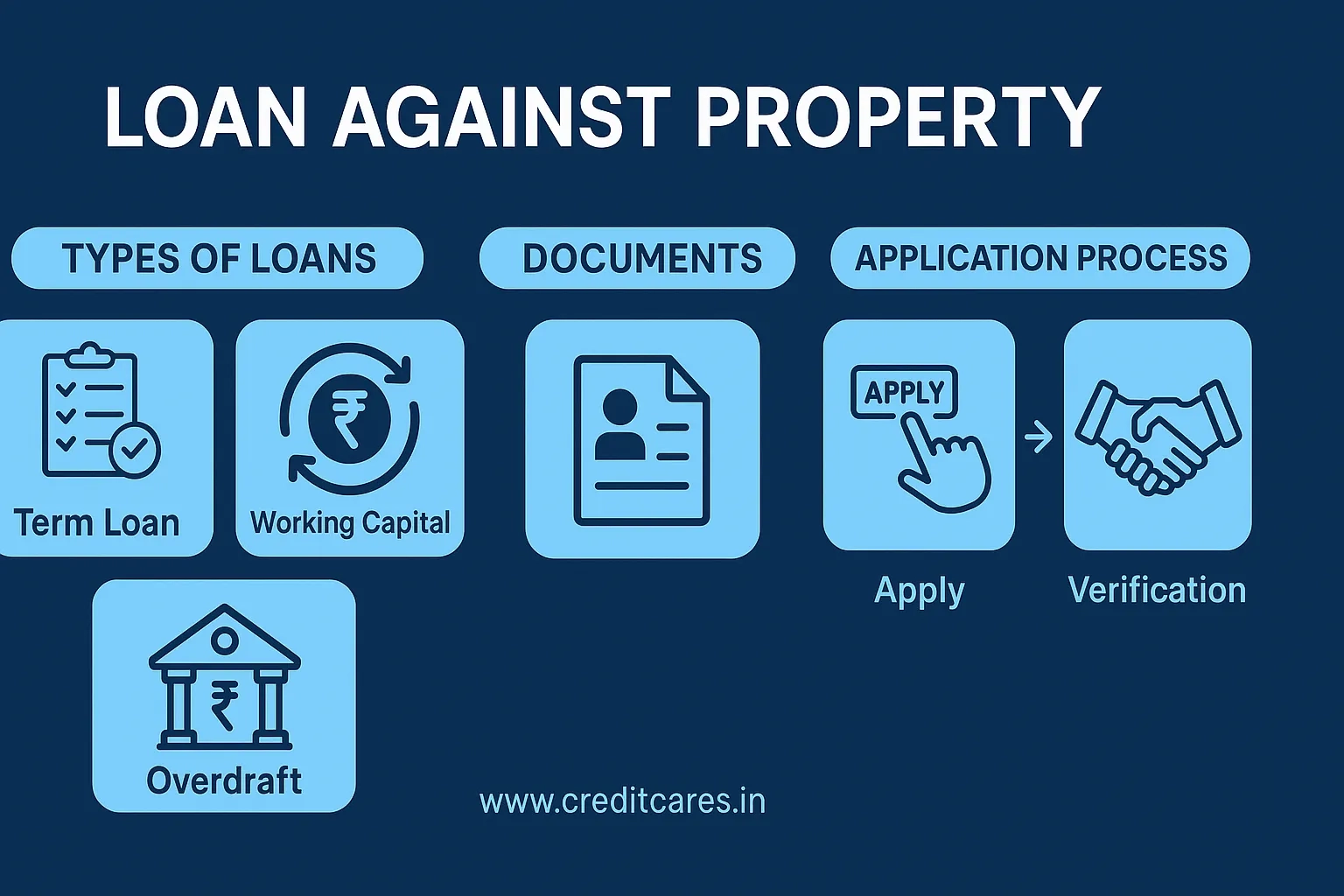Introduction
Loan Against Property (LAP) is a secured loan where individuals mortgage their residential, commercial, or industrial property to obtain funds. While it’s an efficient way to raise capital for personal or business needs, the interest rates you’re offered are influenced by several key factors. Understanding these parameters helps you negotiate better rates, plan your EMIs, and increase your loan approval chances.
In this blog, we break down the top 10 factors that lenders in India consider while deciding LAP interest rates.
1. Credit Score
Your CIBIL score or credit score is one of the most decisive elements in LAP interest rate determination. A higher credit score signifies a lower risk to lenders.
-
Borrowers with scores above 750 are more likely to get better rates.
-
A low score might attract higher interest or even rejection.
You can check your credit score from CIBIL’s official site or learn how credit scores work via RBI’s guidelines.
2. Type and Location of Property
The quality and location of the mortgaged property significantly impact the risk assessment:
-
Properties in metro cities or prime areas receive lower rates.
-
Industrial or under-construction properties may attract higher rates.
For LAPs on residential property, check documentation requirements on HDFC’s LAP portal or ICICI Bank’s LAP details.
3. Applicant’s Income and Employment Stability
Lenders assess monthly income, employment status, and length of service before quoting an interest rate:
-
Salaried individuals with stable income enjoy better terms.
-
Self-employed borrowers may face more scrutiny.
Refer to SBI’s salary criteria or understand income calculation norms from NHB guidelines.
4. Loan Tenure
The longer the tenure, the higher the cumulative interest paid, though EMIs become smaller. Conversely, shorter tenures attract lower rates but higher EMIs.
Check loan tenure vs EMI breakdown on Axis Bank’s LAP calculator or Bajaj Finserv LAP EMI tool.
5. Loan-to-Value (LTV) Ratio
The LTV ratio is the percentage of the property value the lender is willing to fund:
-
Most banks offer 60%–70% LTV.
-
A lower LTV often results in a lower interest rate.
Refer to official RBI guidelines on LTV for LAP or use LTV-based eligibility estimators on PNB Housing Finance.
6. Existing Liabilities and Debt-to-Income Ratio
If your existing EMIs or credit card debts are high, your debt-to-income ratio increases—raising the risk profile and potentially your interest rate.
Calculate your DTI ratio with Investopedia’s guide or refer to BankBazaar’s EMI calculator.
7. Loan Amount Requested
Larger loan amounts often attract slightly higher rates due to increased risk. However, some banks provide discounts on bulk loans depending on the borrower profile.
For LAP amounts above ₹50 lakhs, refer to premium offerings by Kotak Mahindra Bank and IDFC First Bank.
8. Interest Rate Type: Fixed vs Floating
Your choice between fixed and floating interest rates affects how your EMI behaves over time:
-
Fixed rate: EMI remains constant but usually higher.
-
Floating rate: Lower initial EMI, but subject to change.
Learn the difference from RBI’s consumer education guide and compare rates on Paisabazaar’s LAP comparison page.
9. Borrower’s Age
Age plays a role in risk assessment:
-
Younger borrowers (25–45) are generally offered better rates.
-
Borrowers close to retirement may get reduced tenure or increased interest rates.
Check eligibility age-wise on LIC Housing Finance and Tata Capital LAP page.
10. Relationship with the Bank
Your existing relationship with the bank—like having a salary account, prior loans, or investments—can give you bargaining power.
Many banks offer preferential rates to existing customers. Refer to HDFC’s special offers or SBI’s premium account holder benefits.
Conclusion
Securing a competitive interest rate on a Loan Against Property involves understanding your financial standing and how lenders perceive your risk. From your credit score to property location and existing obligations, every detail matters.
By proactively managing these factors, you not only increase your chances of approval but also enjoy reduced repayment burdens.
FAQs – Factors Affecting LAP Interest Rates
1. What is the average interest rate for LAP in India?
Interest rates typically range between 8.5%–12%, depending on your profile. Check official rates at RBI’s Banking Statistics.
2. Can I negotiate LAP interest rates with banks?
Yes, especially if you have a good credit score or an existing relationship. Learn how negotiation works via Moneycontrol guide.
3. Does the property type affect interest rates?
Absolutely. Residential properties in prime areas attract lower interest rates. Understand the criteria via Investopedia.
4. Is it better to opt for fixed or floating LAP interest rates?
Floating rates are lower initially but risky if rates rise. Learn more about the pros and cons via CRED’s interest guide.
Call to Action
Need clarity on your LAP eligibility or interest rates?
👉 Contact CreditCares Today or
👉 Check Your LAP Interest Rate Offers





